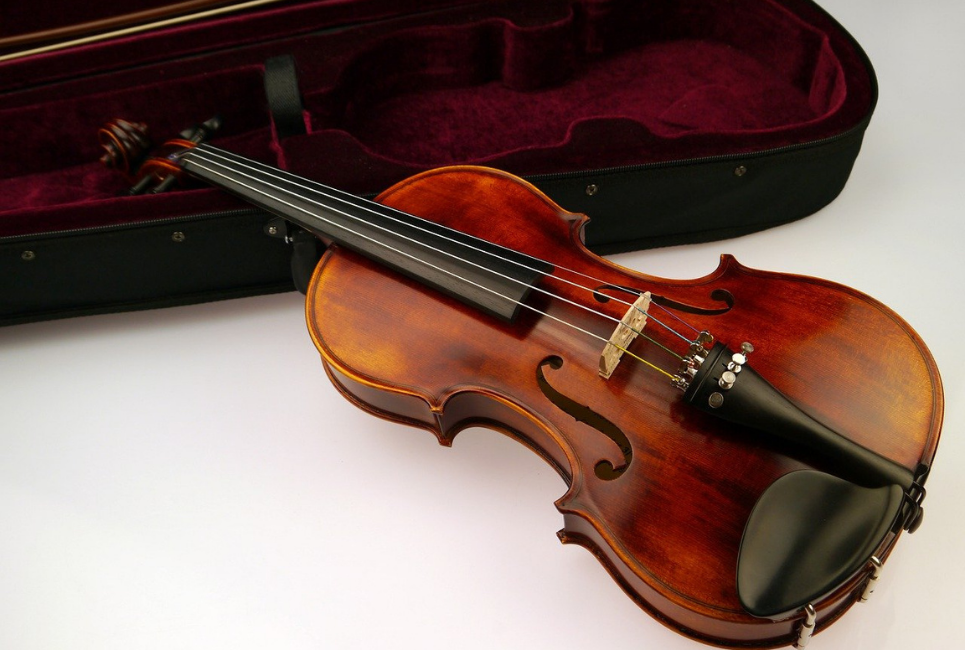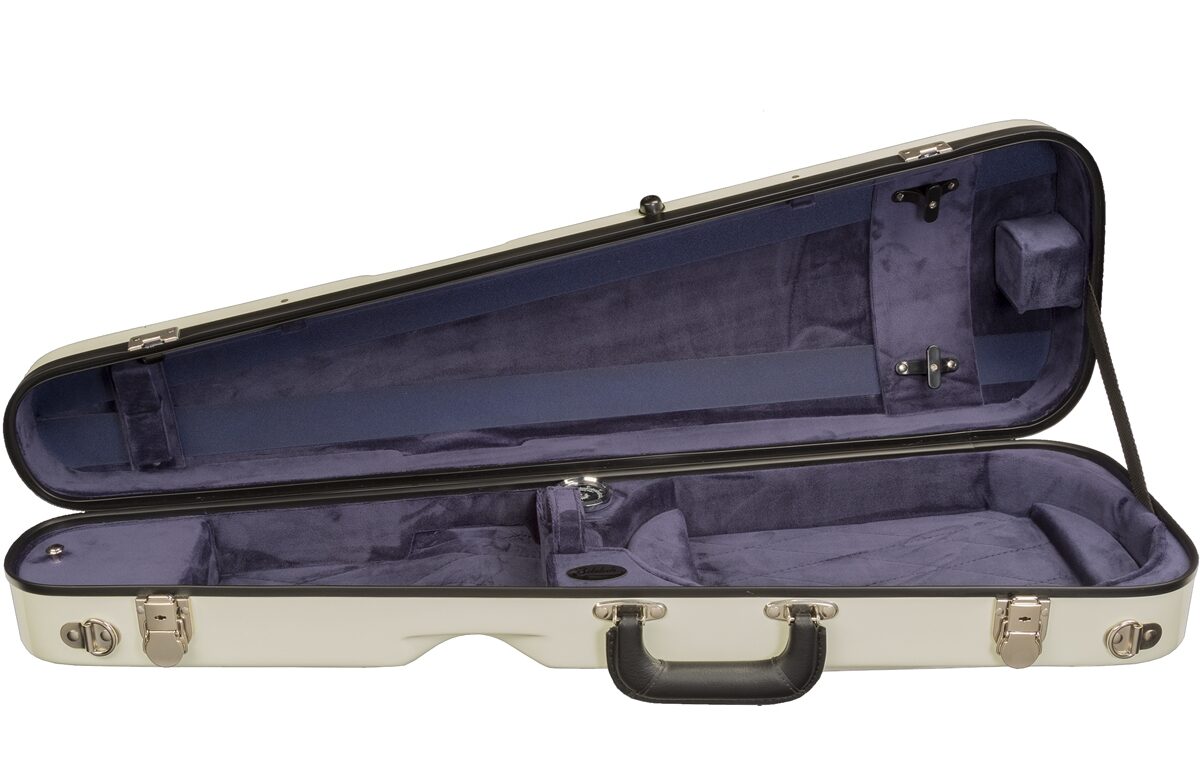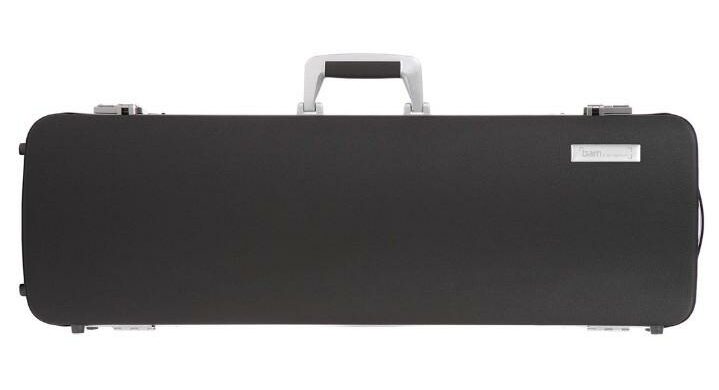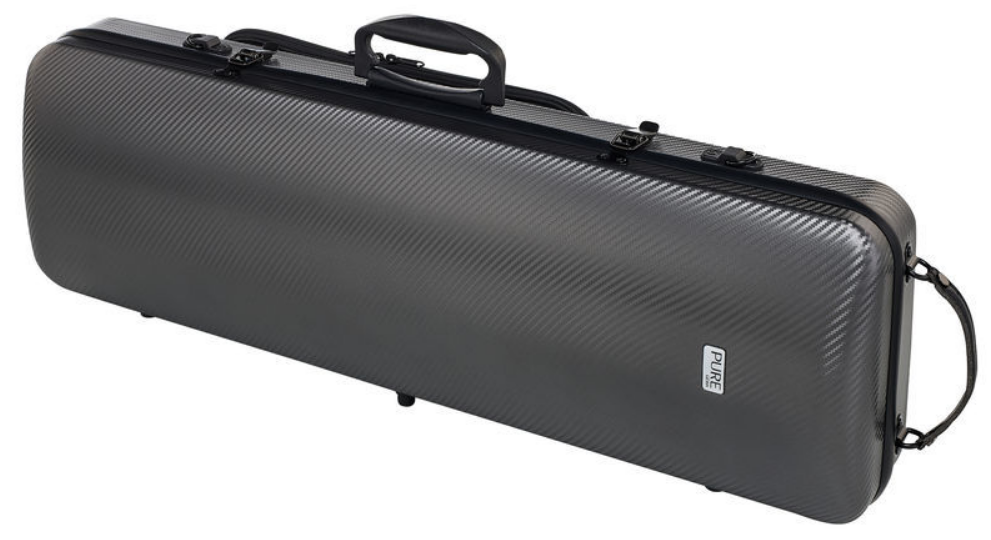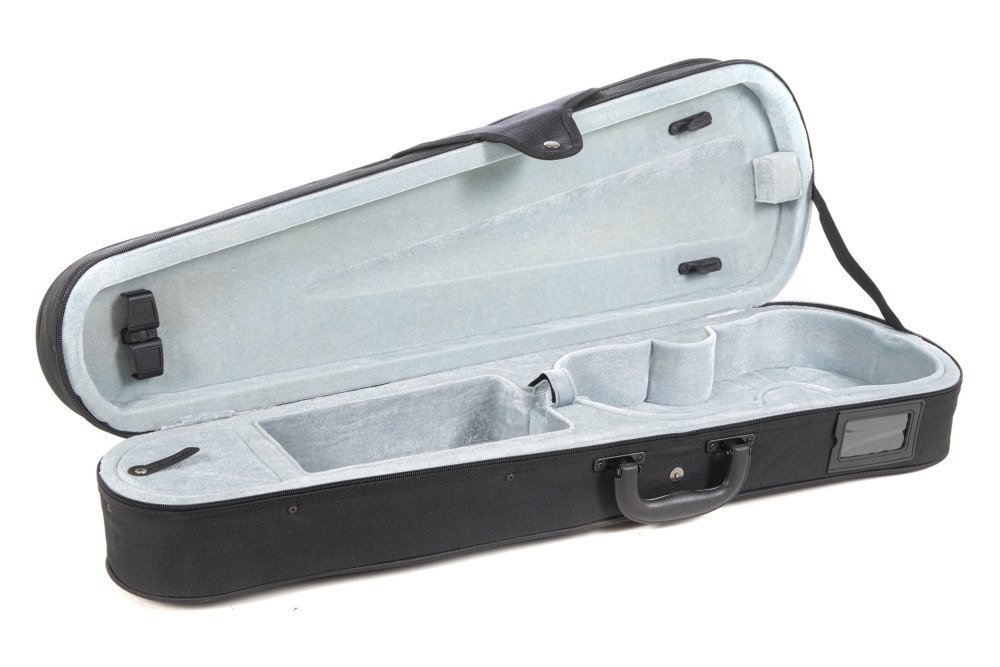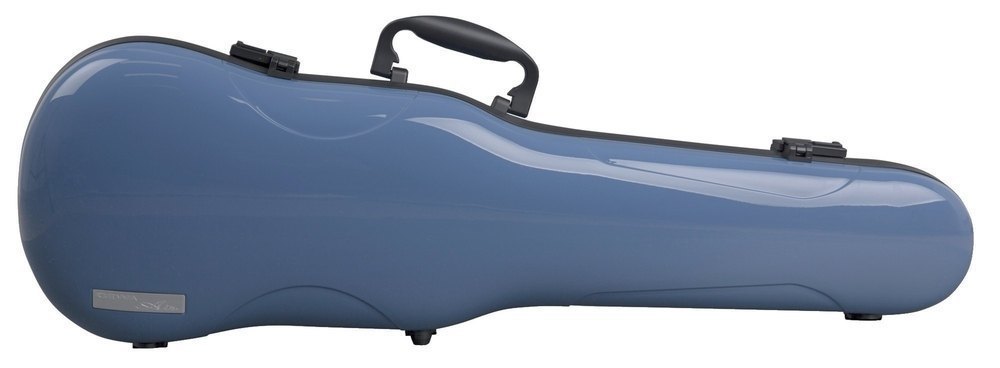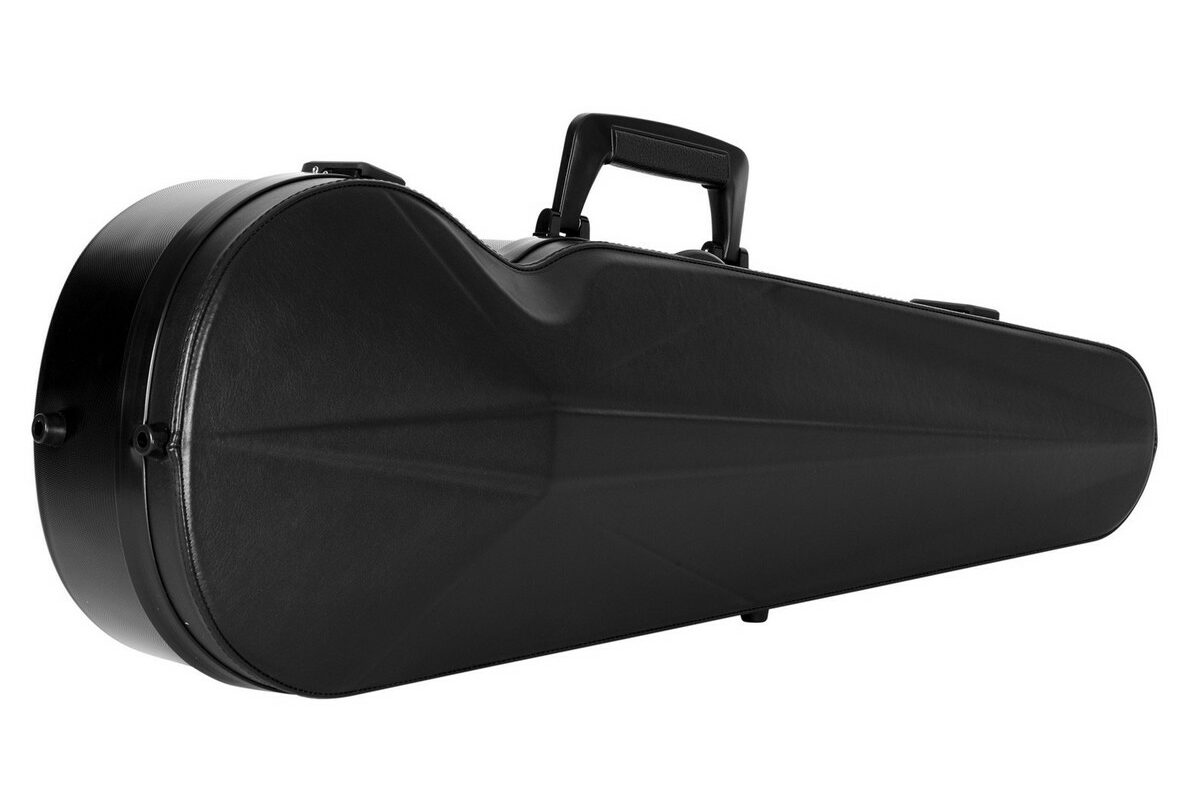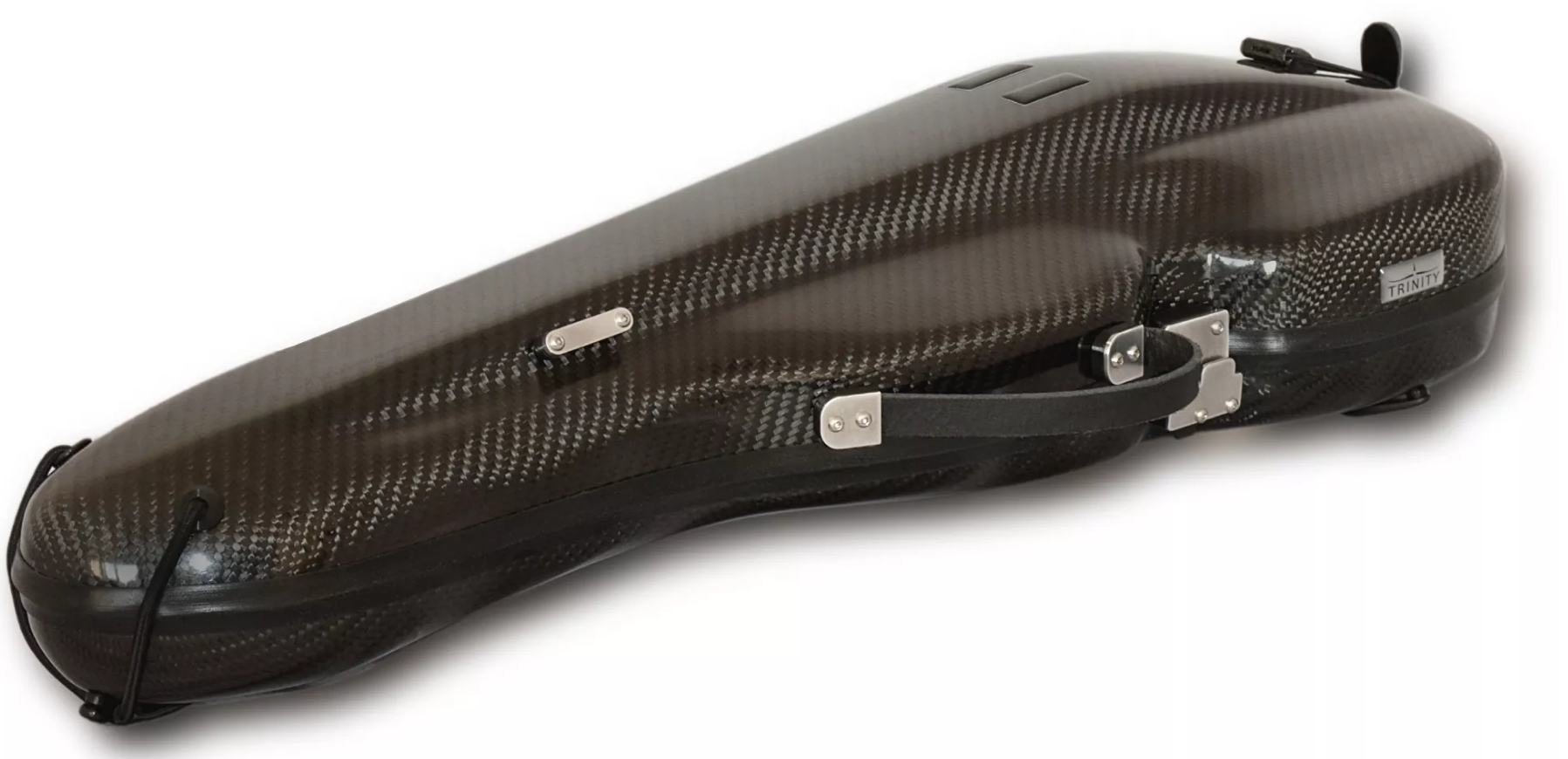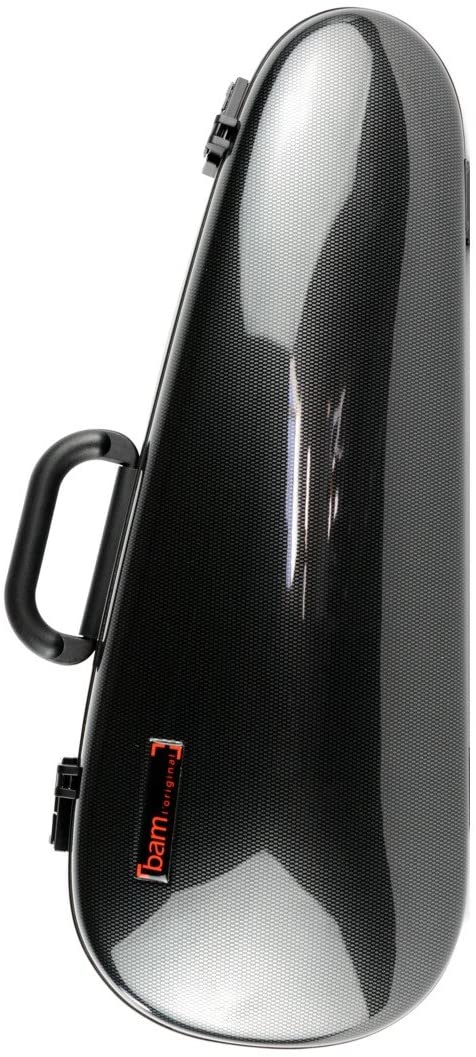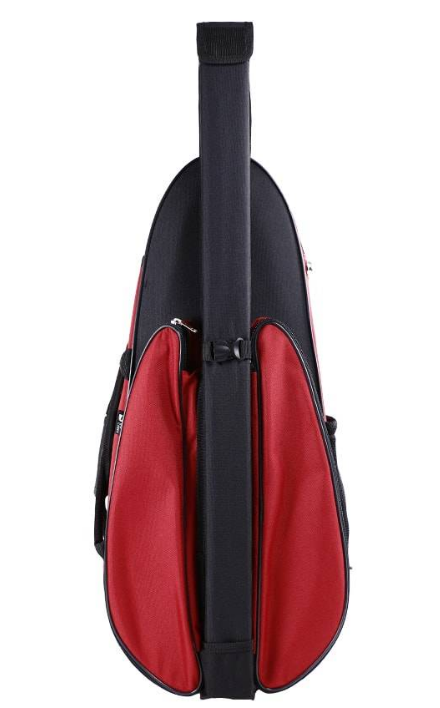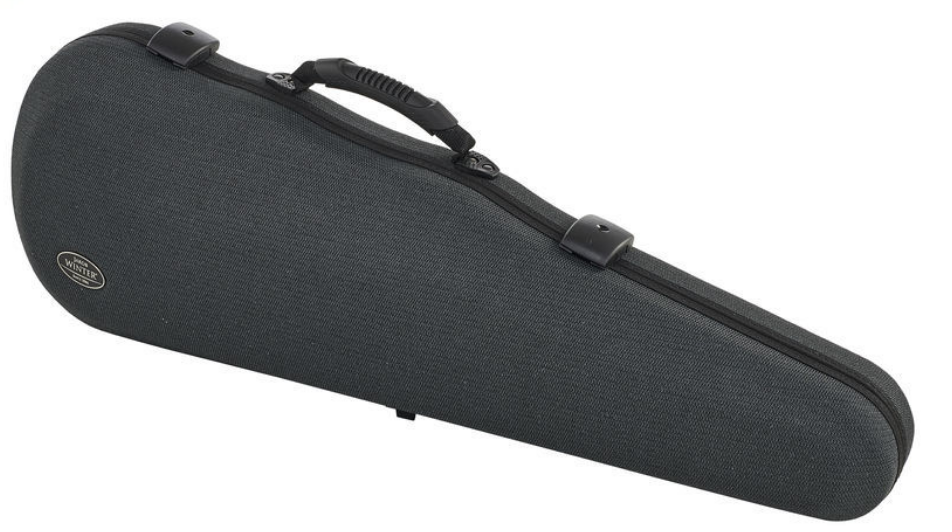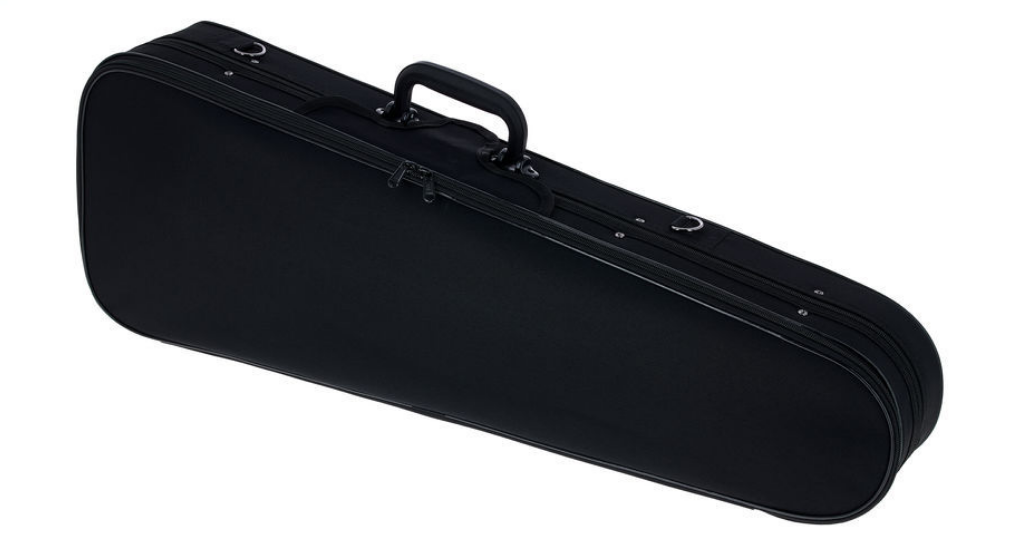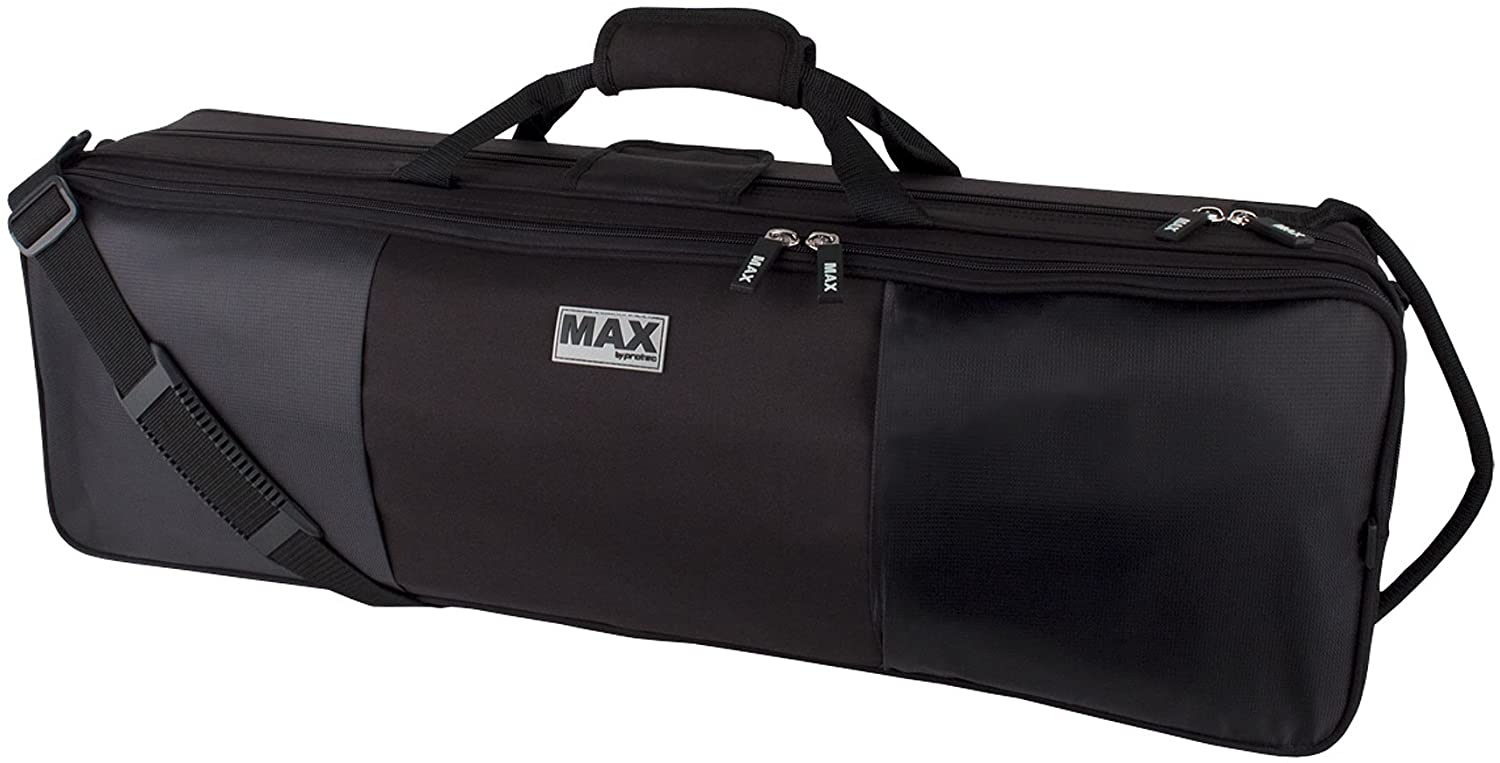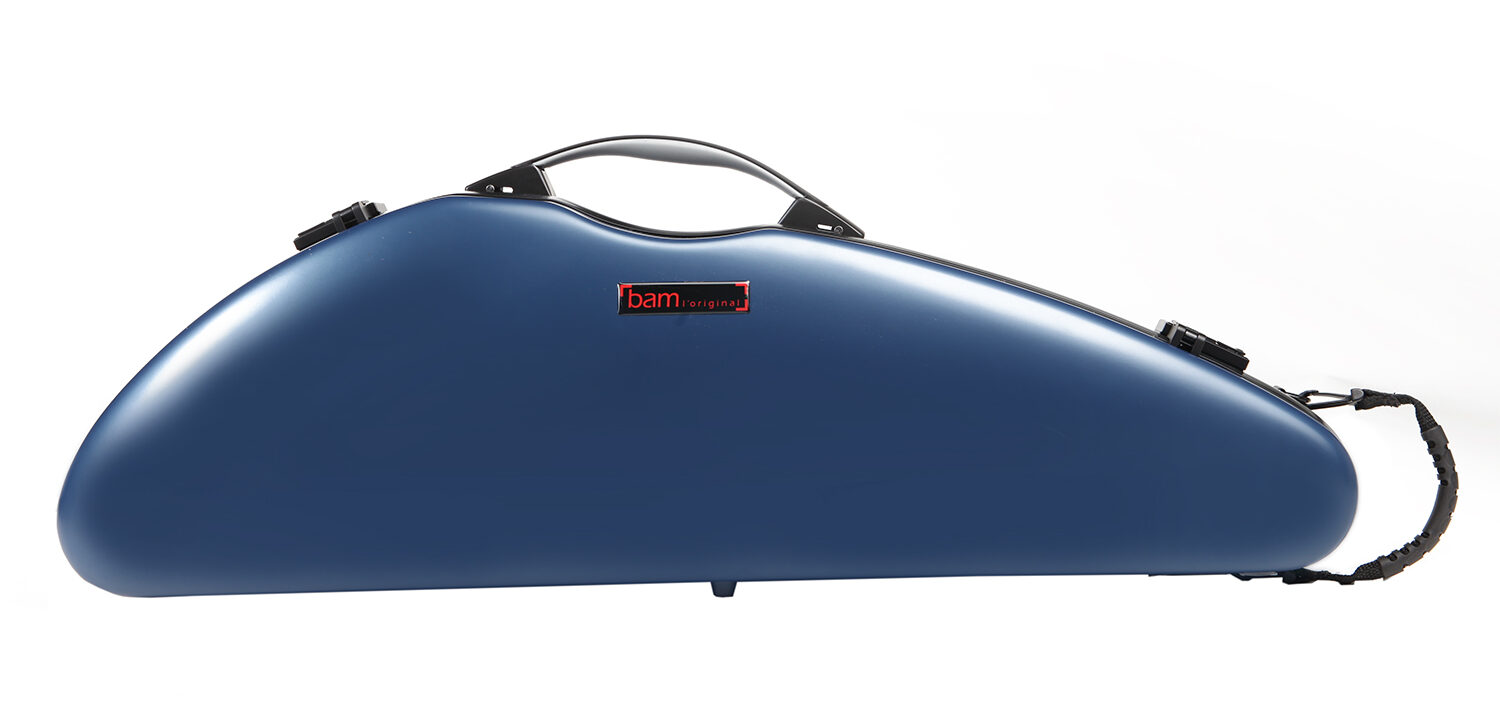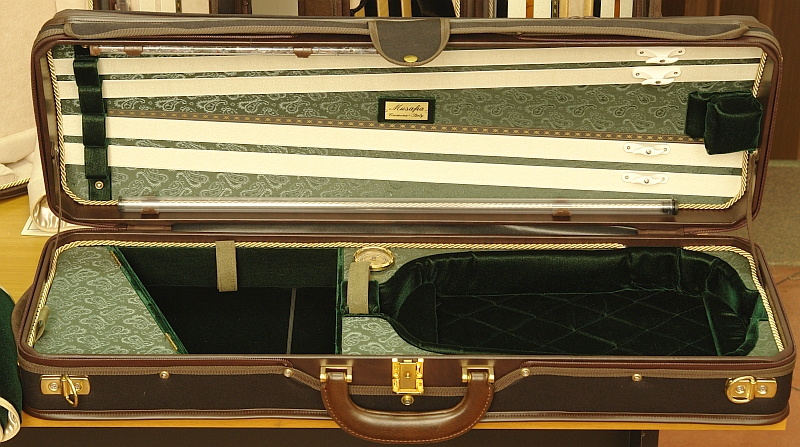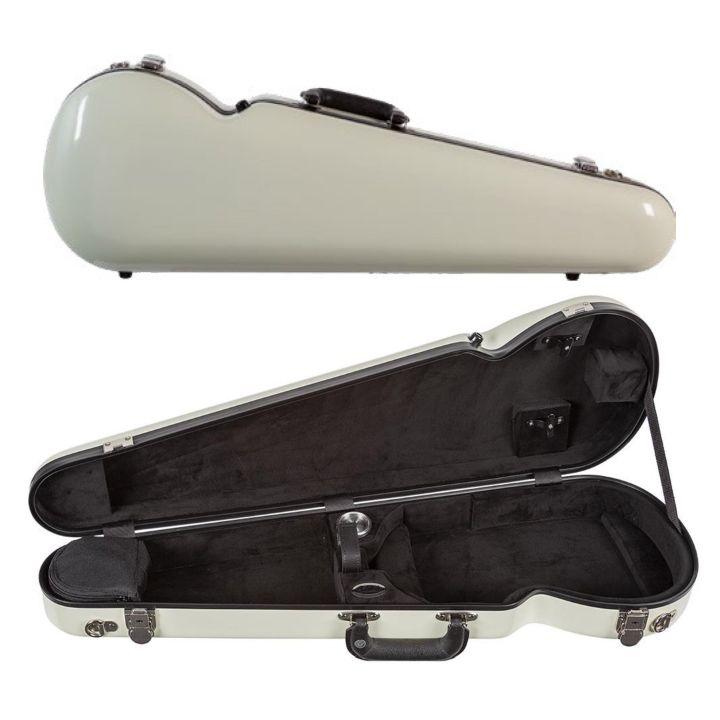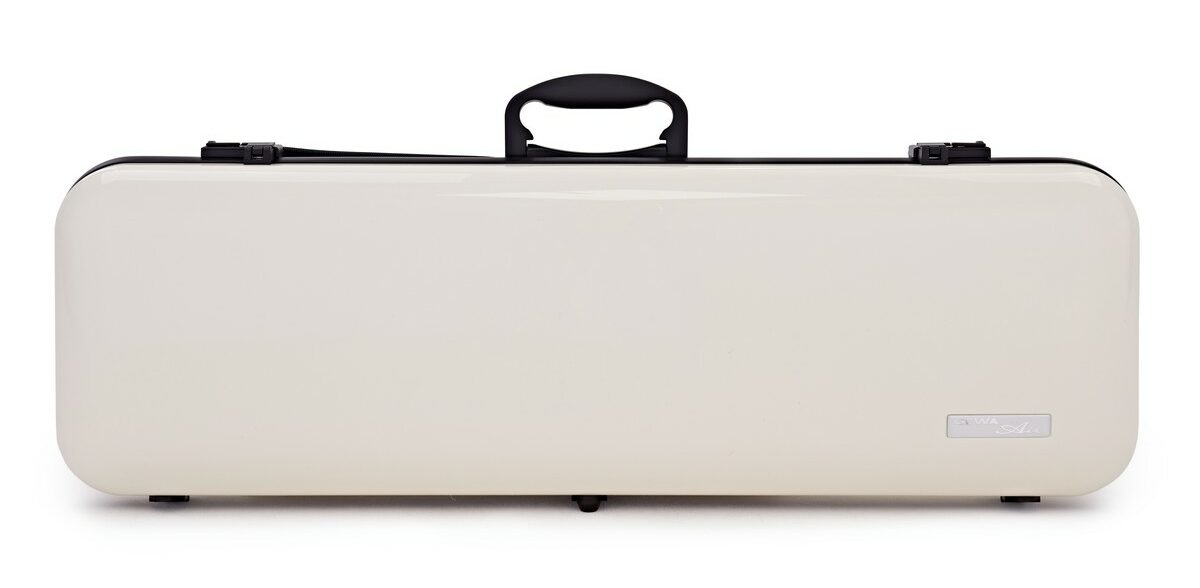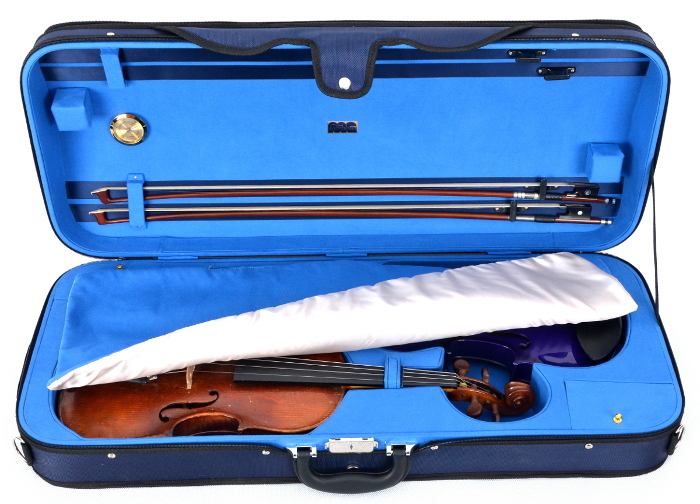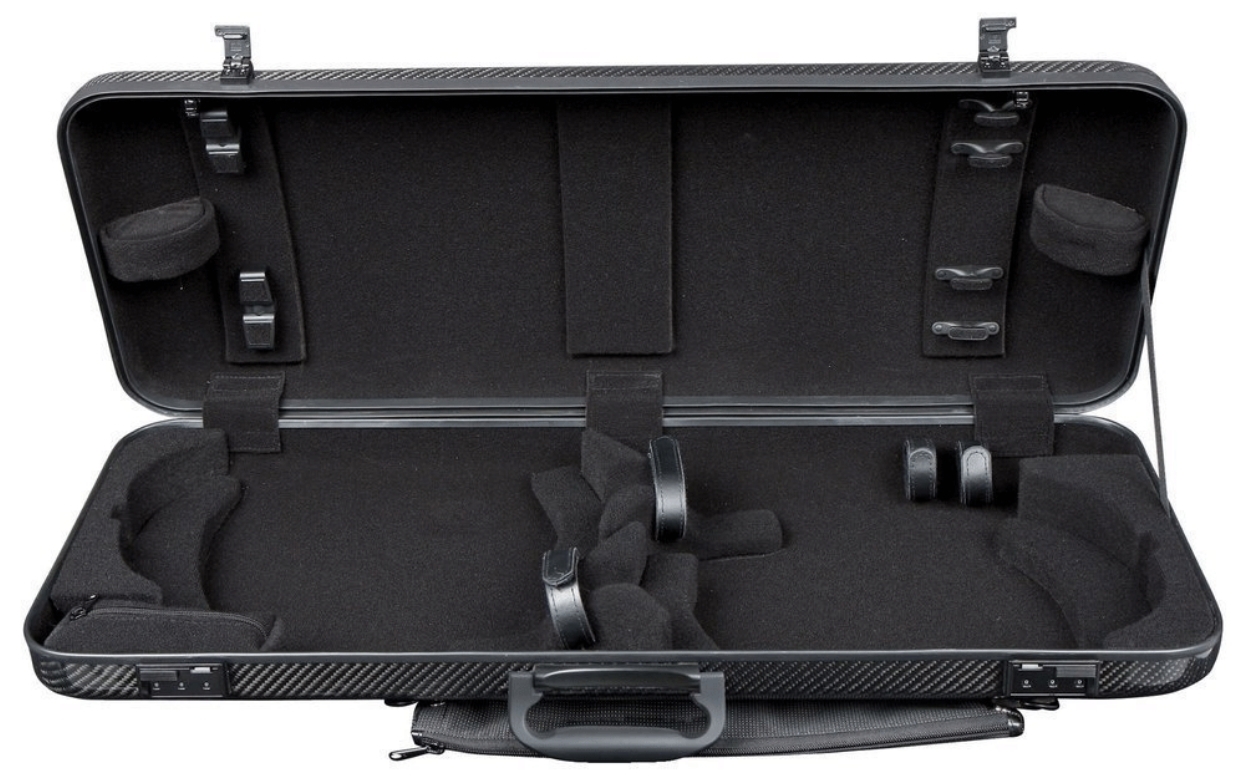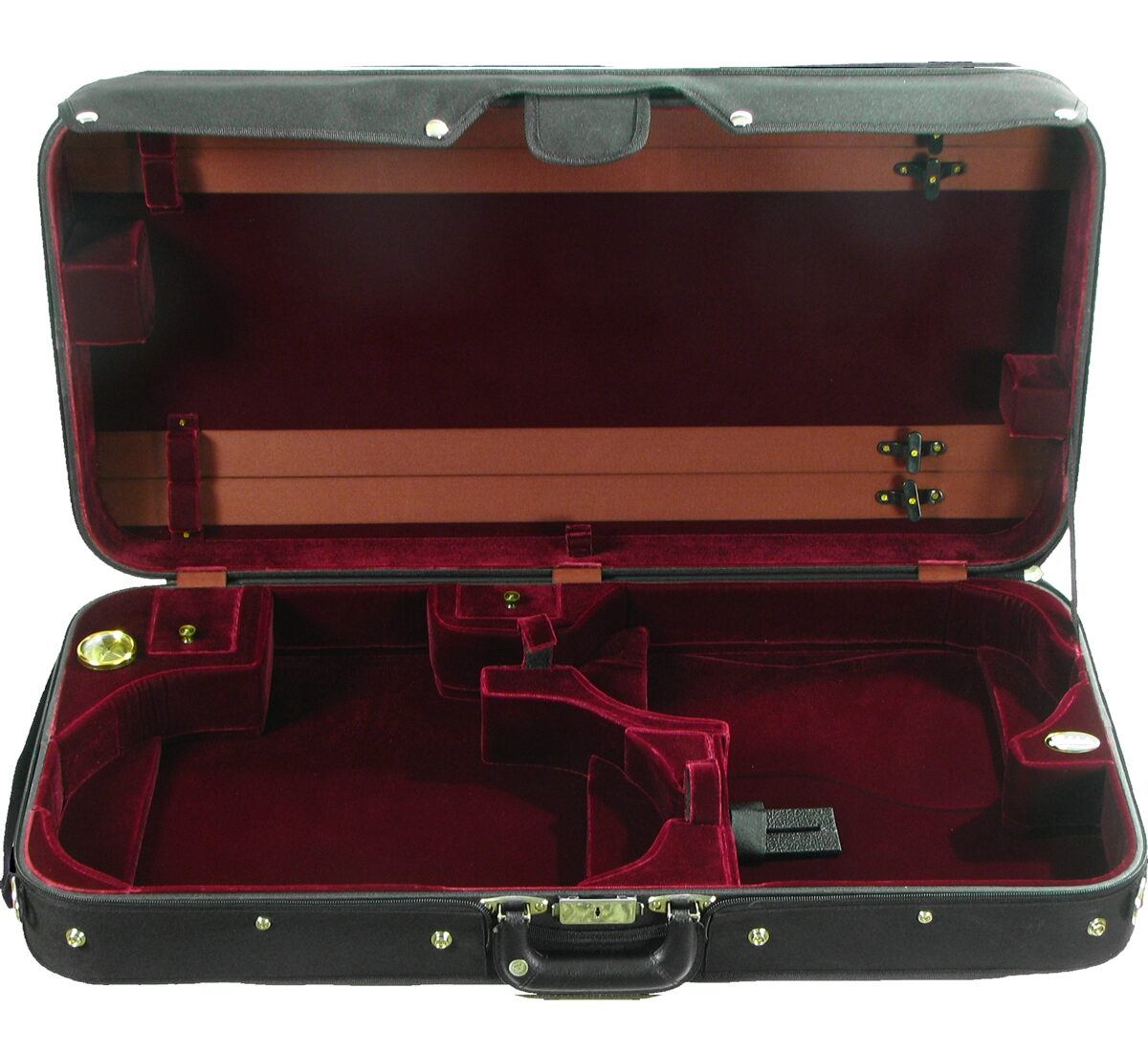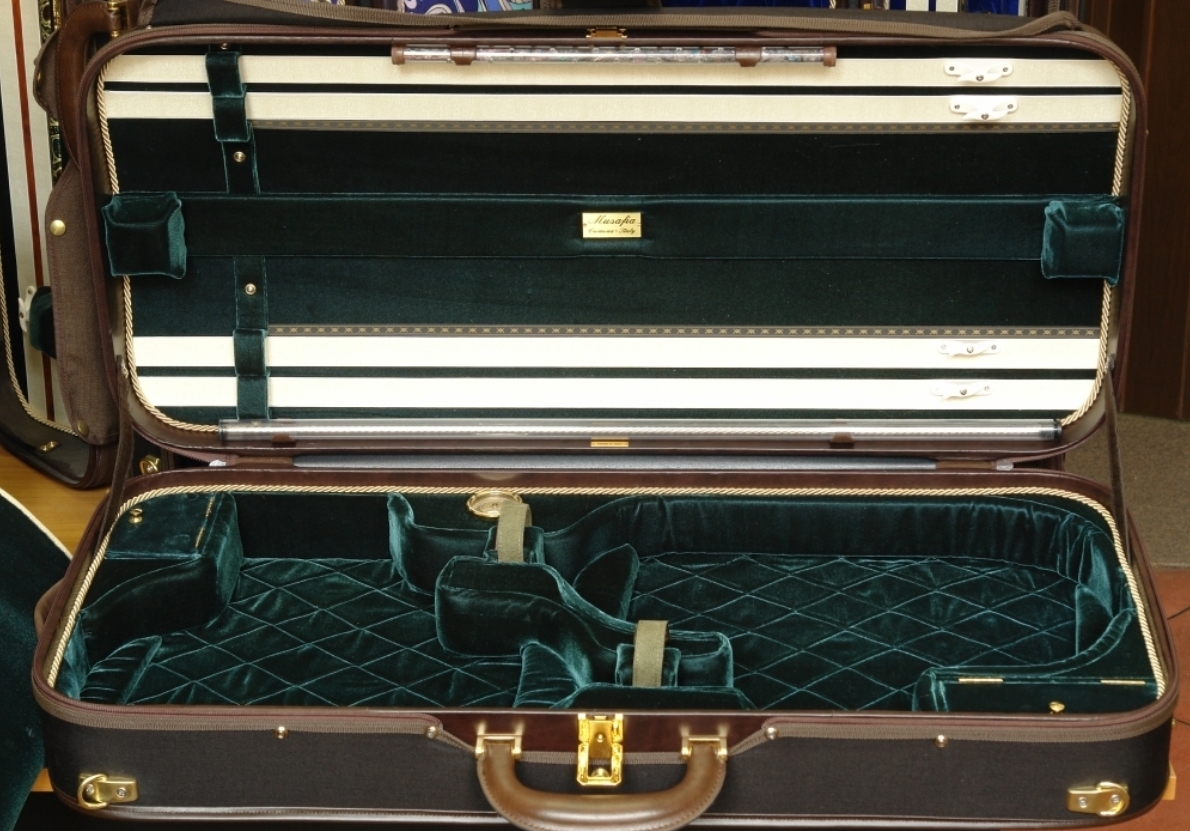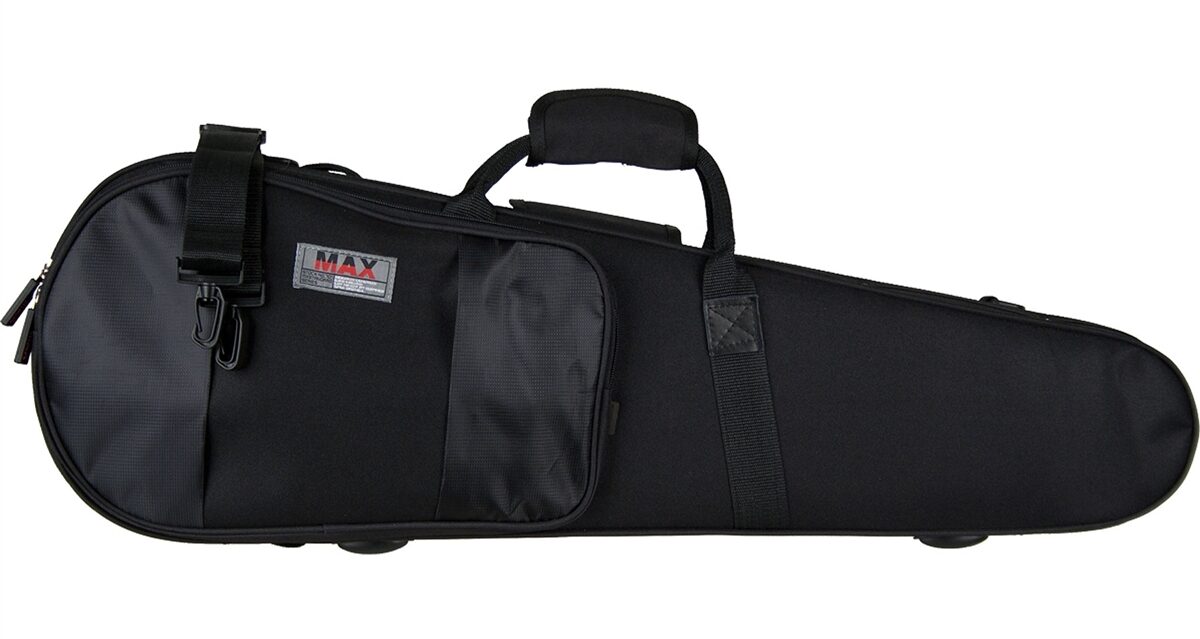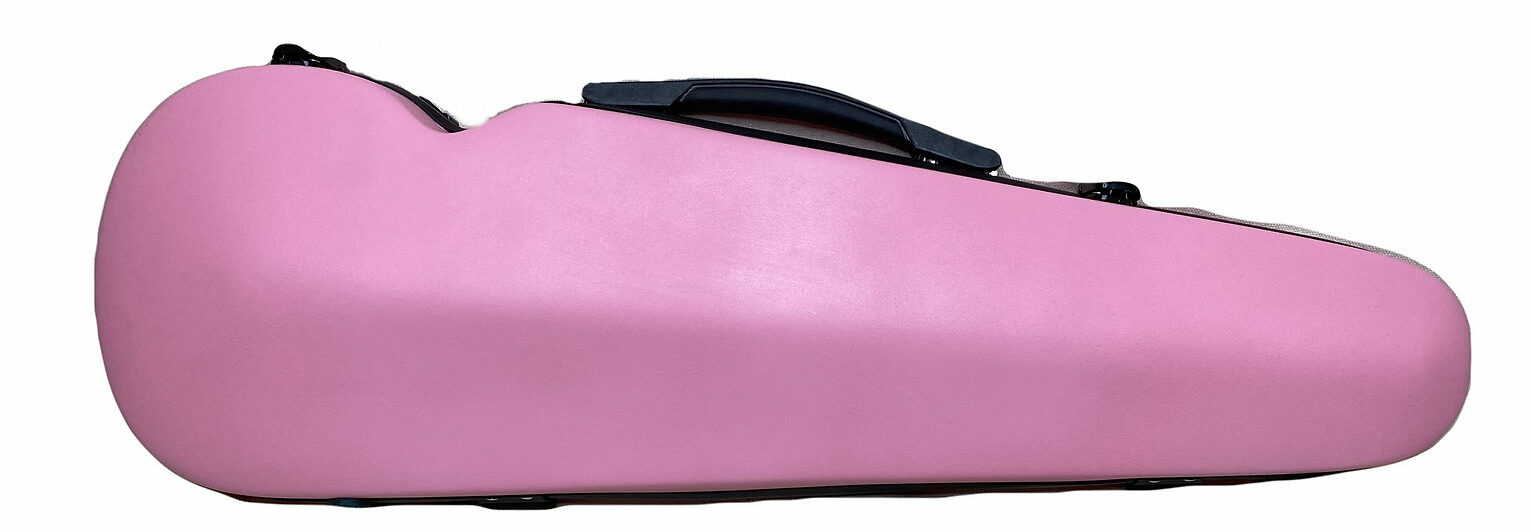- How to Find the Best Violin Shoulder Rest - April 12, 2022
- How to String a Violin – A Guide to Changing Violin Strings - April 3, 2022
- How to Tune a Violin: A Guide to Tuning the Violin - March 21, 2022
Whether you’re a beginner violinist or a professional player, having a good case to protect your instrument is vital!
Violin cases come in many different materials and designs. They also vary hugely in price. To choose the perfect case for your instrument, you must first decide what characteristics are the most important for you.
Top 5 characteristics for violin cases
- Security
- Lightweight and comfort
- Travel-friendly
- Low-cost
- Design
Let’s take a closer look at these five essential qualities and check out some great violin cases that have them!
Security
Keeping your violin safe is the fundamental purpose of a case. A secure case is sturdy, protects the instrument from changes in temperature and humidity, and includes theft-prevention locks. Even if you fall in love with the design or comfort of a particular case, you should always consider how secure it is.
All modern, good-qualities cases have an inbuilt suspension system. These systems consist of cushions (usually made of foam) that raise the back of the violin from the bottom of the case, so it doesn’t knock against it. Suspension systems also greatly reduce the shock from falls or bumps.
Of course, you might not need a super-secure case if you travel very little with your instrument or you’re playing a beginner instrument.
I bought my current violin about ten years ago, before selling my old one. For the time I was waiting to sell the violin, I kept it in a gorgeous wooden case I’d found in a second-hand shop. One of the clasps was broken, and it didn’t have any inside straps or suspension system to protect it when moving, but that didn’t matter because it was just sitting in my bedroom!
Here are some super-secure cases:
Bobelock B1027 Fiberglass Arrow Suspension Violin Case
Bobelock cases are renowned for being strong and durable. They are also significantly cheaper than high-end brands like Bam and Gewa. The fiberglass material of this case is extremely protective and more lightweight than wooden alternatives. The shape is both stylish and slim, therefore lighter than Bobelock oblong cases.
Bam L’etoile Hightech Oblong Violin Case
Bam cases are used by professional players and protect some of the world’s greatest violins. The materials and design of this case keep the instrument safe from pretty much every kind of harm! If it falls or slips, has heavy objects on top of it, or finds itself in a hot or cold environment, this case will protect it fully.
Gewa Pure Violin Case 2.4
The German brand Gewa makes a variety of beautiful, light cases. This sturdy ‘Pure’ model is very similar to the popular ‘Gewa Air’ line, but almost half the price. The main reason for this is that it weighs approximately 1kg more. The Air cases also feature combination locks, whereas the Pure cases have simple clasps; I am doubtful of these as they can easily become damaged over time. However, it’s made of great materials and is a secure, well-designed case for this price. I own an oblong Gewa Air, which I describe later on in the article!
Lightweight and Comfort
If you’re traveling a lot on foot and public transport with your violin, you need a case that is comfortable to wear on your back and doesn’t weigh you down too much. Slim cases are practical if you usually carry a bag with you anyway, which you can keep your scores in. When prioritizing lightweight cases, it’s important to remember the following:
- Soft cases are much lighter than hard ones, but hard cases are generally more secure!
- Violin-shaped cases are smaller than oblong ones and are therefore lighter.
- Carbon fiber hard cases are remarkably light but bad at protecting from heat.
- Great straps can make a violin case comfortable and lightweight to wear, even if it’s not super light.
Here are some nice lightweight cases:
Gewa Form Shaped Violin Case Aspirante
This low-cost model is great for inexpensive instruments and is available for ¼, ½, and ¾ sized violins. Weighing only 1.2 kg, it comes with all the necessary accessories, including a waterproof cover. I love the reflective stripes on the back, ideal if you were to be riding your bike at night with your violin! However, as it’s a soft case primarily made of foam, it would not protect the violin from temperature changes or if it fell from a height, unfortunately.
Gewa Air 1.7
This high-end Gewa model is incredibly strong and only weighs 1.7 kg. Despite being small and violin-shaped, there is room inside for a shoulder rest and a small compartment for rosin. An amazing combination of qualities, but not cheap.
BAM Orchestra Supreme Hightech Contoured Violin Case
Also weighing 1.7 kg; this luxury case is one of the most secure and lightest on the market. Made of Bam’s triple-layer technique, it locks by key and has anti-slip patches on the bottom.
Travel-friendly
Several airlines do not allow violins to be brought on as hand luggage as they are longer than the average dimensions: 56 x 45 x 25 cm. There are a few cases specially made to fit these!
Trinity Violin Case Model 2 (customized)
These cases are quite amazing – they fit the exact shape of a 4/4 violin and can be bought with a special cabin suitcase to carry safely onto the plane. A separate bow tube clips onto the violin case. It is the smallest case on the market and remarkably sturdy, as it is made of layers of carbon and glass fiber.
Bam 2003XLC Cabin Violin Case
Bam has a popular travel case that is made with the same High-tech shells as its other models. Light and durable, the only drawback is the external bow tube which ties on to the case with elastic bands. I find this less than ideal as you must remove the tube each time you want to open the violin case.
Violin Flight Case DO
I know a couple of people who own this cheaper flight model and are content with it! It is a soft case and slightly larger than the two previous models but contains a small rosin compartment. A friend of mine found that after using it for a short while, the velvety inside of the bow tube came loose, so each time she took out her bow, she had to stuff the velvet back in the tube. I think it is ideal as a second case for travel but not for everyday use.
Low-cost
It is perfectly possible to have a secure, comfortable case and not spend a lot of money. Furthermore, simple accessories like a waterproof cover or external laptop lock can render a case damage-proof!
Some low-cost cases I would recommend:
Jakob Winter JW 52017
This is a lightweight hard case with good straps, locks, and a suspension system. It’s made of natural fibers which are water-repellent, and there is a small inside pocket for rosin. Although the shape is aesthetically pleasing, the case does not sit comfortably on its front or side because of the placement of the straps. However, all online reviews are very positive for this inexpensive case.
Petz Violin Case 4/4
For 33 euros this case is magnificent! It has a suspension system inside the compartment and an extra flap on the back for scores. As it’s lightweight, it’s a good option for young players. However, a valuable instrument should not be transported in this case as it’s only made of hard foam and does not have serious locks. Some online reviews say the straps are not comfortable, so the case is not ideal for carrying around extensively.
ProTec MX144 4/4 Violin Oblong MAX Case
This spacious case is a great secure model for less than 100 dollars. The straps are large and adjustable, and there are two handles on the main body of the case. The downside is that the case is not lightweight (almost 3 kg), so it would be quite heavy if carried around with extra scores and accessories.
Design
Give some serious thought to what kind of case you will find the most practical for your lifestyle. If you’re forgetful or disorganized (like me), you’re probably better off with a roomier case that you can keep everything in. I find it essential to keep my shoulder rest, rosin, spare strings, and mute in my violin case. I’d be constantly losing them or leaving them behind otherwise!
There are several extra features that certain cases have. Consider your need for the following:
- Big external pocket for scores
- Multiple bow holders
- Adjustable straps
- Tube for spare strings
- Humidity gauge
If you have a valuable instrument, you should invest in a high-tech case for security. These models come in beautiful shapes and colors, so you can have fun deciding on the model you like the best aesthetically.
You might want to go a step further and invest in a case with luxury features. If so, I suggest the brand Musafia. They have a long list of options, including leather handles and violin ties, silk interior linings, special cushions for bow tips, and satin blankets.
Here are some cases with special designs:
BAM Hightech Slim Violin Case
An unusual crescent moon shape that provides top protection for your violin. Despite being slim and light, the case contains a spacious inner pocket. A friend of mine who has this case managed to attach a large external to its belly for his tablet and other scores.
Musafia Luxury Ultralight
This Musafia model is particularly light. It is possible to customize many of their cases – so if you have an instrument with unusual dimensions or a particularly high chin-rest, it’s worth contacting Musafia to see what they can do.
Bobelock 1063 Fiberglass Shaped Violin Case
Both Bam and Gewa have cases in this lovely shape, but this Bobelock model is significantly cheaper. It also comes with a handy travel cover to protect its shiny exterior.
My Violin Case
Gewa Air 2.1 Oblong Violin Case, Beige Gloss
I thought it would be useful to explain what led me to buy my current violin case, the Gewa Air 2.1, beige color gloss. I eventually purchased it in December 2020, having spent months researching different cases and hesitating between the vast array of choices.
I was looking for a sturdy, high-quality case for less than €500 that had good combination locks, space for my violin accessories, and an external pocket for scores. What made me hesitate so much was the weight of all these practical oblong cases, as I previously had a very light violin-shaped case (which I couldn’t put anything in).
A colleague in my orchestra had the Gewa 2.1 model, and I tried it on my back after one rehearsal to see how heavy it was. I was amazed! The straps were so good that I didn’t feel the 1.5 kg difference with my old case.
I loved its smooth, shiny design and eventually chose the beige color to make sure the case wouldn’t overheat when exposed to strong sunshine in the summer. I found the white case a bit too bright and didn’t want a flashy color that would attract too much attention. So the beige seemed perfect!
I’m really happy with my case, although there are two drawbacks. The size means I cannot assume that airlines will allow me to take it on board as hand luggage, so I have to contact them in advance to make sure it’s okay. With Ryanair, for instance, I should buy an extra seat for the violin. The case lacks a subway handle, so when I’m sitting on a crowded bus or metro with the violin vertically between my knees, it’s a bit clumsy to get up with it. Still, I’m really happy with my choice, and my violin is too 🙂
Materials
When researching violin case models, it’s worth learning what values certain materials have over others. Some cases might look like they’re made of the same material, and you might wonder why the price is so different.
The plastics
Although one wouldn’t immediately think that plastic would make a great violin case, most of the high-end brands use plastics like polycarbonate, thermoplastic, or ABS for the outer shells. BAM uses a three-layer technique which includes two different types of ABS and a layer of Airex foam. All three plastics are highly heat-resistant and strong. It’s hard to tell the difference between these materials and carbon fiber, but plastic is much better at insulating the instrument from heat.
Fiberglass is also a type of plastic, although a thick layer is necessary for it to be as strong as the three mentioned above. Beware of bad quality cases that are made of foam, covered with a paper-thin layer of fiberglass, and sold as a secure hard case. Generally, fiberglass cases are less expensive than other plastic cases.
Wood
The traditional material for cases, wood, is strong, durable, and heat-resistant. However, it’s not enough to buy a wooden case for these reasons; the craftsmanship is really important! Cheap wooden cases can be prone to cracks and might break altogether if dropped. They can also be much heavier than plastic alternatives. A 100% trustworthy brand for wood laminate cases is Musafia, although their prices are very high.
Carbon fiber
Carbon fiber was very popular for a while because it’s so lightweight. However, it’s rarely used nowadays because it can heat up so easily. If you do buy a carbon fiber case, consider buying a travel cover to protect it from the sun.
Styrofoam
‘Soft’ cases are all primarily made of compacted foam. Some are combined with thin plywood or covered with a layer of canvas. While foam is very light and heat-resistant, it does not protect the violin from big shocks. Foam cases will deteriorate quickly through tears and scratches. That said, I do believe foam cases are the best for children and beginners to use, as they’re so light and are usually transported very little.
Special Cases
Double Violin Case
Sonans 2V
This is a nice low-budget double case, although I don’t think it’s ideal for frequent use as it would deteriorate with time.
Gewa Idea 2.5
A very light and secure case. Some normal cases for single violins are heavier than this double model! However, it is seriously expensive, so it is probably only useful for players who need to carry both instruments regularly.
Violin and Viola Case
If you’re also a viola player, click here to discover some great viola cases. Here are two double cases:
Bobelock 1023 Oblong Violin/Viola Double Case
A relatively cheap canvas model, good for occasional use.
Musafia Double Case for Violin/Viola
A beautiful, durable case with silken quilted padding. Many optional features are available on command, like extra side resistance and an inside GPS tracker.
Best Cases for Children’s Violins
Protec MAX Case – Violin Shaped
Very light with comfortable straps. The Max models are available from ¼ upwards.
Prodigium Strings Child Violin Case
Triple-layer high-tech cases for all sizes of violins. As children tend to go from size to size rapidly, I don’t recommend investing so much in cases like these unless the instrument itself is highly valuable.
FAQs on How to Find the Best Violin Case
Answer: I think the best materials for cases are certain plastics (thermoplastic or polycarbonate) which are hard. That said, there are certainly soft cases on the market which are well-made and protect the violin well. Soft cases are more practical for children and beginners.
Answer: It’s up to you! Black cases are elegant and will blend in with most professional environments, so you can have it with you on stage or in the studio. Light cases deflect heat better, so they are good if you live in a hot country. Bear in mind that your case will inevitably get some scratches and marks over time, which might show up more on a lightly colored case. Brightly colored cases are more personal and fun!
Answer: Many airlines will accept a violin case on board, whatever size, as an equivalent to a suitcase. You should always check the rules and regulations on the airline website carefully, as some airlines have their own rules for instruments. I recommend being one of the first on the plane to ensure you can put the violin in the overhead compartment. See the travel-friendly section above for some small cases.
Answer: Cheap cases have fewer security features than high-tech cases. However, depending on your instrument and lifestyle, you might not need a high-tech case.
Answer:
• A waterproof cover, especially if the case is soft.
• A hygrometer to measure the level of humidity in the air
• A silk pocket for your violin to nestle in, inside the case
• An extra pocket for scores
I hope this article has helped you in your journey to find the best possible case for your violin! If you’re feeling overwhelmed by the number of cases on the market, I recommend clarifying your budget and going with the most secure model you can find for that price. In the end, colors and shapes are just not as important, and however heavy the case is, it’s nothing compared to a cello or double bass case 🙂
Looking for more interesting readings? Check out:

